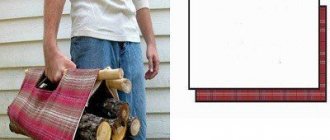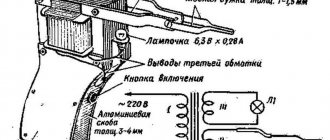Everyone enjoys the popular finishing material plasterboard, easy to use, practical and versatile, suitable for walls, ceilings, various structures and partitions, if not for one “but”. Produced in the form of heavy, large-sized sheets, it is inconvenient to deliver and transport. And installing or raising such panels to the required height alone is not an easy task. To simplify the use of gypsum boards, a device for carrying drywall will help, the choice of which depends on the characteristics of the work being carried out.
How to lift and carry weights correctly
It's hard to imagine a renovation that wouldn't involve moving heavy objects.
Almost any renovation involves moving furniture or heavy building materials, such as bags of cement, for example. It is not surprising that such events end in unpleasant injuries, such as sprains, back and joint damage. These injuries can continue to haunt you for a long time and develop into chronic spinal diseases. To avoid overstraining yourself during repairs, you must follow some simple precautions. This tip is dedicated to this issue.
So, rule number 1 - never overestimate your capabilities . If you feel that the object is quite heavy, it is better to call someone for help. Even if at least two people are involved in moving the load, they will be able to distribute the weight of the item well and moving it will be several times more comfortable than doing it yourself. And even if there are several of you, but you still feel that the load is too heavy, then it is better not to try to move it without special devices that will take the main weight of the load.
Rule No. 2 – correct technology for lifting and moving loads . It is better to lift heavy objects not with your back alone, but with your back, legs and arms at the same time. That is, it is necessary to distribute the weight of the load as much as possible over the maximum number of joints and muscles. In order to lift a heavy object, you need to bend your knees, move your torso slightly forward, and be sure to straighten your back in the lumbar region. Lifting weights should resemble a squatting exercise. Ideally, in this situation, a special wide belt for the lower back, like the one that weightlifters use when lifting heavy barbells, will come in handy. Under no circumstances should you lift or move weights with your back alone, with your legs straight at the knees and your back bent into an arc. This will inevitably lead to sprained intervertebral ligaments, radiculitis, and maybe even a spinal hernia.
(how to lift weights correctly)
Rule No. 3 - use special devices and devices to move too heavy loads. If you have to move a heavy sofa or cabinet, it is better to stock up on sufficiently long belts or ropes that can be used as lifting slings. If you thread a strap under the legs of a moving cabinet or sofa, and grab the free ends with your hands or, if the length allows, throw the strap over your shoulder, then moving the load will seem like child's play. Firstly, the process of lifting and moving will become much more convenient, because your hands will be used completely to grasp the rope, and if you grab the edge of the same cabinet or sofa with your bare hands, then this heavy object will dangle on your fingers alone. Secondly, it is safer, because in this case the likelihood that a heavy load will slip out of your hands and fall “on a loved one, on a callus” or on the floor is reduced, thereby becoming damaged and damaging the floor covering. Thirdly, in this case, you will lift and move your sofa with your back almost straight, and this is also very comfortable and safe for your back. The only advice is not to use too thin a rope or a narrow belt, they dig into your palms too much.
(using devices to move furniture and other loads)
Also, when moving a heavy cabinet alone (over a short distance), a regular jack can be useful. We support the cabinet on one side with a jack, so that two of the four legs are lifted off the ground by at least a centimeter. Place a rag or cardboard under the jack first to avoid scratching the floor. And under those two legs that remained standing on the floor we throw a belt or rope, as described above. We grasp both ends of the rope with both hands comfortably (while keeping the back straight, which prevents injury). We lift the cabinet and, turning, move it a little in the direction we need. Then we move the jack under the other two legs of the cabinet and repeat everything on the other side. This way the cabinet will slowly move to the position we need. In this case, the jack, firstly, helps reduce the friction force, because instead of two legs, the cabinet remains on one “leg” (on the jack). And secondly, if the legs are not strong enough, and the cabinet or sofa is too loaded or is massive in itself, or maybe also old, then the legs may simply give way. It's better not to risk it and take a jack











